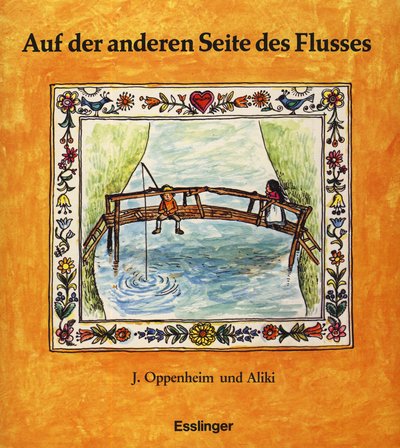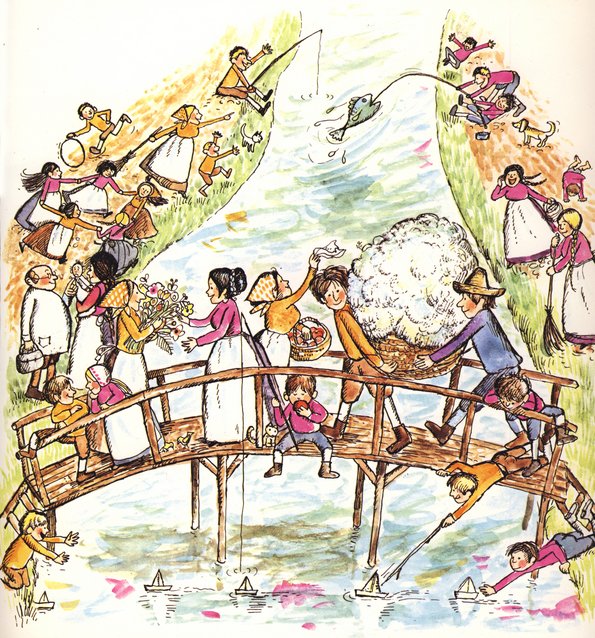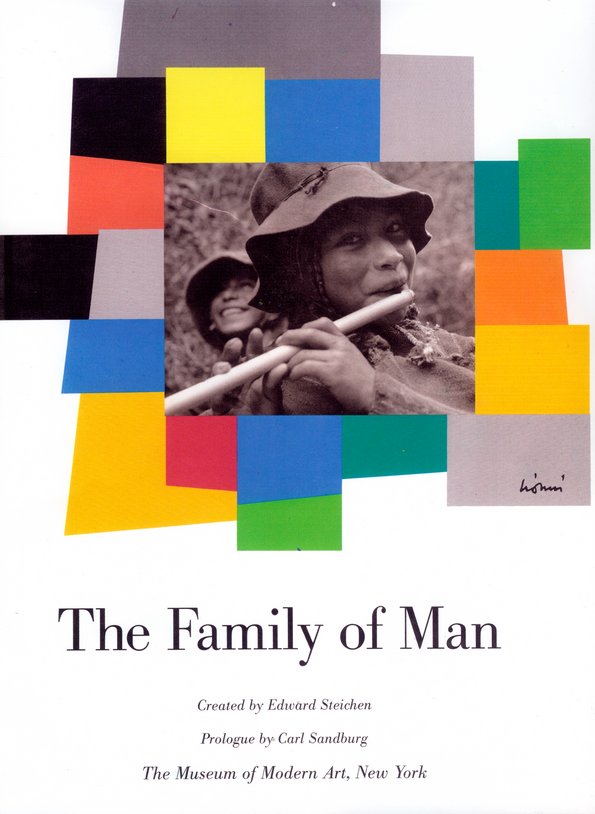Peace does not come by itself
by Dr Eliane Perret, psychologist and curative teacher
The greatest wish of all human beings is living together in tranquility and peace, therefore the question of how we can achieve lasting peace is all the more urgent in view of the events which are presently shaking Europe. This ardent wish is reflected in many testimonies of human history. After the bitter experiences of two world wars, previous generations have already achieved a great deal at the political level, in the human sciences and in culture in general, so that we do not have to start from scratch with our efforts. Their creation of international treaties to secure peace, their research in pedagogy and psychology, their great works in art and literature were invaluable contributions to international understanding and touched people in their feeling of interpersonal solidarity. It is worthwhile taking a look!
“We have to cooperate!”
Waldau is a village situated on a river. People have lived on its banks for a long time. What an idyllic picture! But appearances are deceptive, because (and this is nothing unusual) rivalries, jealousy and envy cause conflicts which encumber the communal life. This is the content of the picture book “On the Other Side of the River”1, which – although published a long time ago – has lost nothing of its topicality: Villagers live in a picturesque setting on both sides of the river, which are connected by a rickety wooden bridge. Their coexistence, however, is disturbed by constant quarrels between the inhabitants on the west side and those who live on the east side of the river. So, for the time being, nobody is really unhappy when a thunderstorm destroys the bridge ... until the chimney sweep on the left bank of the river needs new boots, but the cobbler lives on the other bank; the baker on the right side urgently needs the chimney sweep on the left side of the river and the cobbler has hit his thumb so hard with a hammer that he urgently needs to see the doctor, who, however, has his practice – not surprisingly – on the other side of the river. So eventually it becomes obvious to everyone that they have to play ball and resolve their conflict, which they succeed in doing.
Free and equal in dignity and rights
Much has changed in our everyday lives since this picture book was published to teach young children the logic of cooperation. In our latitudes, people rarely live in manageable village communities anymore, but we often live close together and yet far away from each other in densely built, anonymous clusters of apartment blocks. For shopping, people go to the shopping centre where, apart from their purchases in the butcher’s shop, they also buy other products that are necessary (or unnecessary) for everyday life, as well as clothes and shoes. Sometimes all this is also settled by means of online shopping. The crafts described in the book are now taken over by large companies, jobs are dehumanised or relocated to cheaper producing countries (under working conditions that are hardly ever publicly discussed and questioned).2
However, the small village community by the river reflects what it takes to live together in peace, and that has nothing to do with nostalgia. On the contrary, there is much to be learned from it, especially today, because it is about the fundamentals of being human, the necessity of cooperation on the basis of mutual respect, as it was formulated in the Universal Declaration of Human Rights in 1948 and adopted by the United Nations General Assembly in its first article after the horrors of the Second World War: “All human beings are born free and equal in dignity and rights. They are endowed with reason and conscience and should act towards one another in a spirit of brotherhood.”
Only thus can peace come to the world
191 countries have signed this declaration since. But a view into the world shows an apparent lack of the necessary seriousness and determination to turn this goal into reality. However, this is what we need, because human dignity is not a self-evident fact, but must be established and strengthened at all levels of human coexistence; it must be promoted and spread consistently and with the necessary perseverance. Only in this way can peace come to the world. No one may take the liberty of placing him- or herself above other human beings, or feel entitled to dispose of them and treat them disparagingly, for, as the second article of the Human Rights’ Declaration states: “Everyone is entitled to all the rights and freedoms set forth in this Declaration, without distinction of any kind, such as race, colour, sex, language, religion, political or other opinion, national or social origin, property, birth or other status.”
And: “Furthermore, no distinction shall be made on the basis of the political, jurisdictional or international status of the country or territory to which a person belongs, whether it be independent, trust, non-self-governing or under any other limitation of sovereignty.”
Images of the human family
Obviously, it was clear to many people who had experienced the horrors of the world wars that now everyone had to pull their weight to ensure that it would never again have to come to that. Just as Käthe Kollwitz did after the First World War, so that she reached the conscience of several generations with her famous woodcuts, as an artist, a mother and a fellow human being. “Never again war!” And where do we stand today? People all along the world belong together, nobody must be assigned enemy images, because we all belong to the same human family. The world-famous photo exhibition “Family of Man”, which was conceived by the Luxembourg photographer Edward Steichen for the Museum of Modern Art in New York from 1951 onward and opened in 1955, is an impressive reminder.3 In the universal language of photography, which can be understood by all people, it takes up the basic principles of living together in peace formulated in the UN’s Universal Declaration of Human Rights. Edward Steichen and his team selected 503 photographs by 273 photographers from 68 countries out of more than two million images. In a comprehensive portrait, these show 32 concerns that preoccupy people all over the world – whether it is love, work, children, or also disability, war and death – and point to human equality and common nature. After the experiences of the Second World War, this exhibition was meant to help promote understanding between people and point out the catastrophic consequences of a nuclear war, as known from Hiroshima and Nagasaki. In 2003, the exhibition “Family of Man” was declared a World Heritage Site by UNESCO, and it can now be seen in the small Luxembourg town of Clervaux.
Lost roots of our own history
These foundations for a human family living together in peace were obviously still more naturally anchored in the minds of people and the values of nations fifty years ago. They have their roots in the long traditions of the respective cultures, and for a long time, they shaped family upbringing, educational goals and school education. Also research and teaching in the faculties of education and psychology at the universities were based on these foundations.
Since the 1970s, however, Western countries have been marked by a break in values brought into society by the Frankfurt School, which deeply unsettled human coexistence. Not only the “elites”, but broad sections of the population of Central Europe have since lost their emotional connection to the roots of their own history. They are therefore easily seduced into a “way of life” characterised by superficiality in relationships, consumerism and a lack of self-reflection and sense of responsibility, so that active participation in shaping community affairs is on shaky ground.
Do not sow hatred and discord
Although coexistence in equality would be possible today, billions of people around the world are deprived of elementary basic rights, and large political entities behave like colonial masters. They arrogate to themselves the right to interfere in the destinies of other countries, to create dependencies, to stir up conflicts in order to sweep away governments they do not like, and they are not afraid to declare themselves the guardians of democracy and freedom.
Equally reprehensible is the attempt to control people’s attitudes towards other peoples through propaganda methods (for example in the media), to sow hatred and discord and to divide the world into good and evil. Since the Second World War, not a year has passed without wars. Worldwide, at least 60 to 65 million people have died as a result of these wars. Would we not do well to reflect on what our future should look like as a human family on our planet? What values should our coexistence be based on? It is time to remember what far-sighted people created after the horrors of wars to make peaceful coexistence possible: the UN Universal Declaration of Human Rights, International Humanitarian Law, the International Committee of the Red Cross, all building on values that correspond to our European cultural heritage. So if you do not wear blinkers, you will see how much there is to be done to give people the chance to live together in peace.
Recalling fundamental values
It is not that simple to stifle the human desire to live together in peace. The real question before us today, the question posing itself ever more urgently, is how we can reinforce the necessary basic values in education and upbringing. We adults must set an example of these values as the basis of every healthy personality development, so that they become emotionally tangible for our children and young people. Why not start with a holiday excursion to Clervaux as a starting point for conversations that today’s children and young people are still so keen to engage in? •
1Oppenheim, J./Aliki. (1972). Auf der anderen Seite des Flusses (On the Other Side of the River). Vienna: Österreichischer Bundesverlag. It is regrettable that this picture book written half a century ago by an American author and later published in many languages is now out of print in English and in German.
2Interesting articles on this topic can be found on the Public Eye website. www.publiceye.ch/de
3Steichen, Edward. (1996, first edition 1955). The Family of Man. Distributed Art Publishers (DAP), New York; https://steichencollections-cna.lu/deu/collections/1_the-family-of-man


